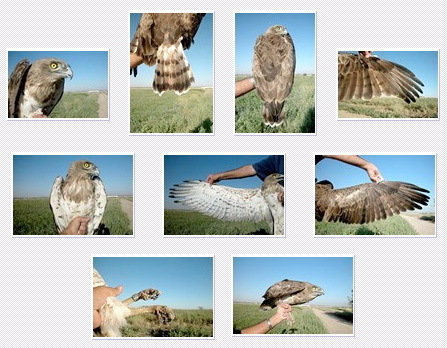 This bird had been photographed by Javier G. in Peñaflor (the environments of Zaragoza city, Spain) /map/ in August 2013. Thanks to the author and to Javier Blasco-Zumeta we have the following information about that unique record of leucism in Short-toed Snake Eagle:
This bird had been photographed by Javier G. in Peñaflor (the environments of Zaragoza city, Spain) /map/ in August 2013. Thanks to the author and to Javier Blasco-Zumeta we have the following information about that unique record of leucism in Short-toed Snake Eagle:
That absolutely white bird was born in a forest of Aleppo pine (Pinus halepensis), successfully left the nest, was observed in its territory until the end of September, and when it was time to start the migration the juvenile Short-toed Eagle flew away.
If the bird has survived, its return to Europe may be expected next year, after 2 years of probable wintering and summering in Africa.



